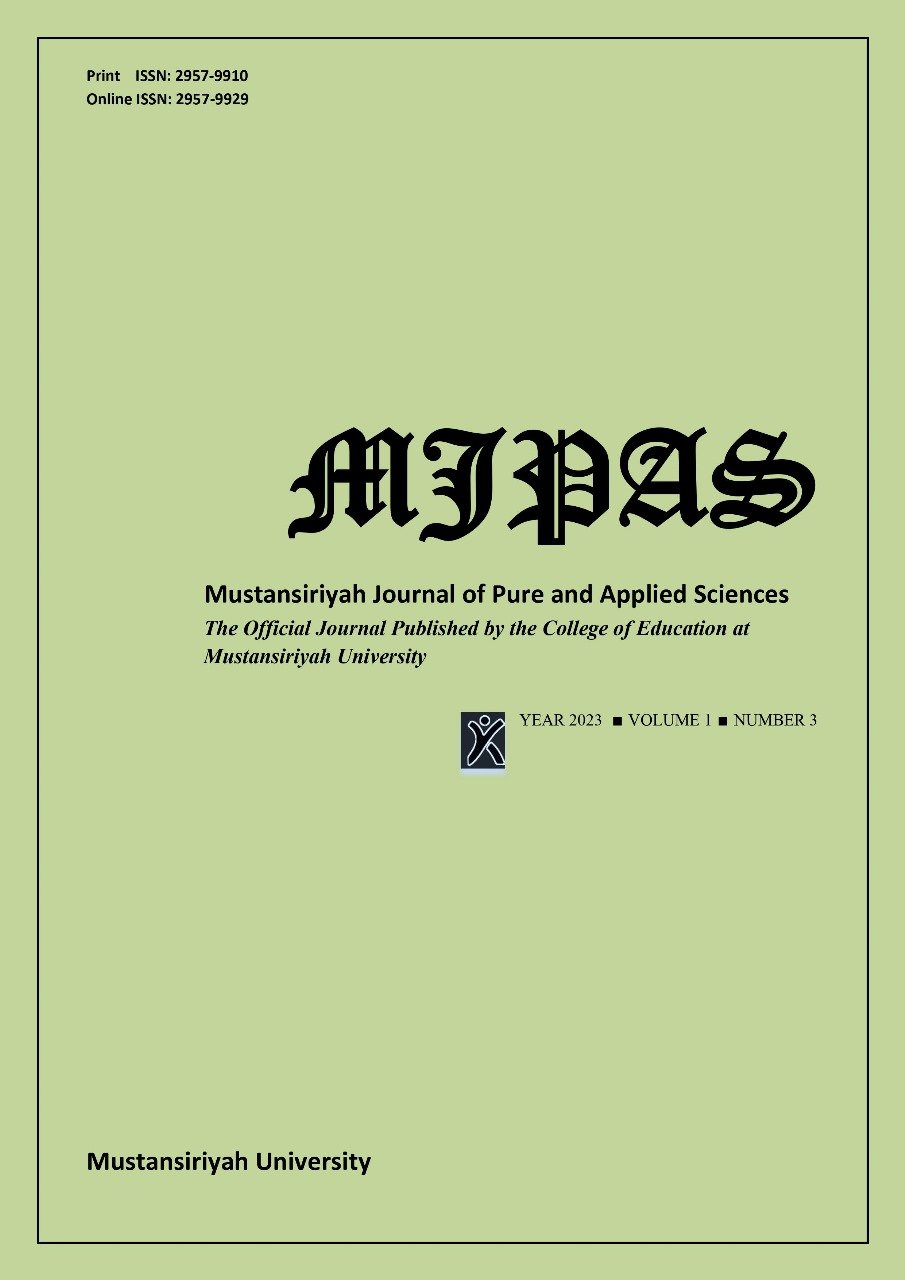Degradation of Organically Polluted Water by Photocatalysis of SnO2:CuO Nanocomposite Under the Influence of Sunlight
R.A. Al-Mousawi, A.A. Saeed, M.F. Al-Kadhemy and K.N. Abbas
DOI: https://doi.org/10.47831/mjpas.v1i3.54
Keywords: SnO2:CuO nanocomposite, photocatalytic, Sunlight, Methylene blue (MB), Hydrothermal method, Structural morphological, Optical properties.
Abstract
Reactive dyes pose a major risk to the environment and human health when they contaminate water. In this study we prepared highly efficient a synthesis of SnO2:CuO nanocomposite with two different concentrations by environmentally friendly which is hydrothermal method. The technique of X-ray diffraction was used to examine the structural properties of the materials, The FE-SEM technology was utilized to explore and evaluate the surface morphology, FTIR and UV–visible spectrophotometer. The results reveal from XRD that the crystal structure of samples exhibits two phases comprising SnO2 structure that possesses tetragonal rutile, tetragonal cell of metallic Sn, and monoclinic-phase of CuO. FESEM images detect that the change of precursor concentration in the range of (0.1-0.05 M) influence the shape of the nanocomposite and has an amazing effect on the diameter size as-grown particles in the range of (53.8-22.73) nm and photocatalysis. The FTIR spectra's presence of vibrational bands corresponding to CuO and SnO2 confirms that these materials exist in the nanostructure, showing that the binaries of metallic oxides have been integrated successfully. In UV-Vis., absorption increase with thickness layer. With rising thickness layer, the energy gap dropped from (2.05 to 1.98) eV. Using Methylene blue as a model pollutant, the photodegradation efficiency of SnO2:CuO nanocomposite was investigated. SnO2:CuO (95% and 92% at 135 min.) The hydrothermal approach with two different concentrations supports the photocatalytic activity observed in this work to remove methylene blue, and the result is to preserve the aquatic environment as much as possible.


